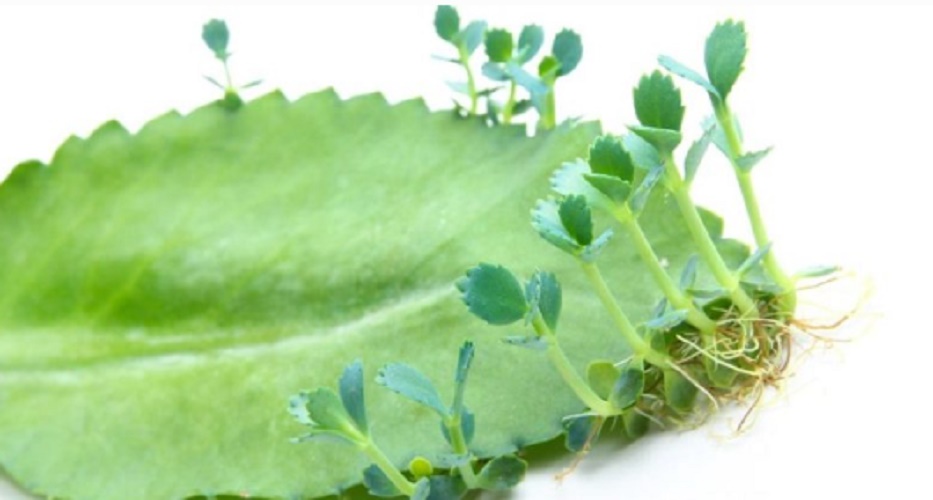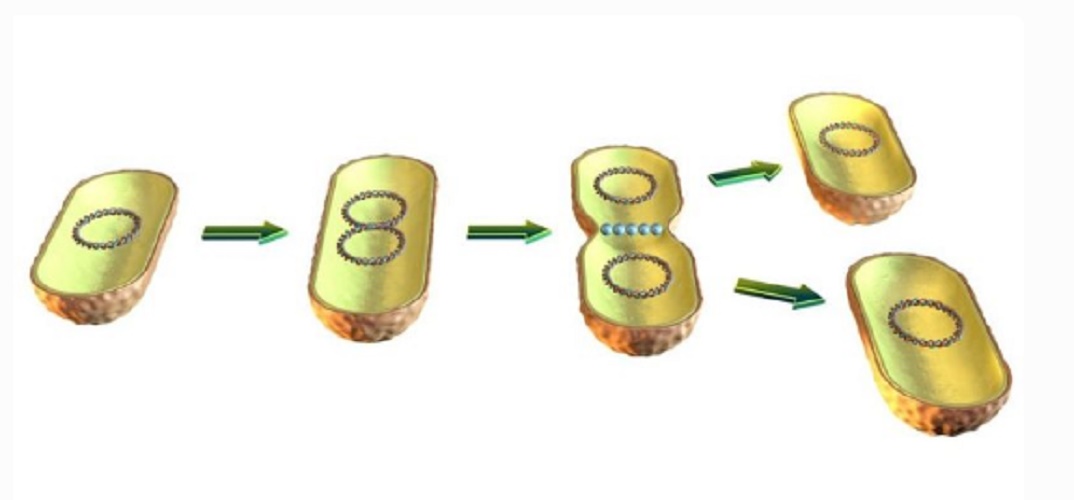What is asexual reproduction? Types, Examples, Characteristics | Updated
We explain what asexual reproduction is, its advantages, disadvantages and the types that exist. Also, what is cloning.
What is asexual reproduction?
The reproduction involves the production of new individuals of the same species as the parent , that perpetuate when he no longer found. Therefore, it is one of the main stages in the cycle of existence of every living being.
This process can be sexual or asexual, depending on whether or not an exchange of genetic information occurs with another individual . In sexual reproduction, this information is exchanged and a genetically distinct offspring is formed to their parents. On the contrary, asexual reproduction does not imply an exchange of genetic information .
That is, when an organism reproduces asexually, it does so through methods that consist of the replication or duplication of its genetic content , to give rise to new individuals genetically identical to itself. In other words, it does not require the participation of third parties.
This distinguishes itself from sexual reproduction, such as that of human beings , in which each parent contributes half of their genetic information , through sexual cells or gametes (ovules and sperm cells), thus obtaining a unique individual , different from their two parents.
Asexual reproduction is typical of primitive unicellular organisms ( prokaryotes ), fungi and plants . It also occurs in certain specific cases of animals . However, in more complex forms of life , sexual reproduction is usually more frequent.
Characteristics of asexual reproduction
The main characteristics of asexual reproduction are highlighted below:
- A single parent participates who gives rise to their offspring.
- The genetic material of the offspring is identical to that of the parent.
- Sex cells (gametes) are not involved and there is no fertilization .
- It allows to give rise to a large number of new individuals in a short period of time.
Difference between asexual and sexual reproduction
Asexual reproduction differs from sexual reproduction because the latter requires two specialized cells of different sex, that is, cells that can form gametes through the process of meiosis .
The new organisms created from sexual reproduction will be genetically different from their progenitors because they are a mixture of the genetic information contained in the two gametes. It is a slower mechanism but adapted to more variable environments .
Types of asexual reproduction

Sexual reproduction can occur through the following methods:
- Budding . It consists of the production of bumps or formations in the same body of the parent, from which then an independent individual emerges, capable of detaching and living autonomously, or of remaining attached and starting a colony. It is a frequent process in porifers, cnidarians and bryozoans.
- Fragmentation . It produces new individuals from fragments of the parent’s body, thus reconstructing the entire body from a significant piece of it. These fragmentations can be the result of accidents or intentional, and are common in starfish, offices and in the planarians.
- Binary fission . This type of asexual reproduction is carried out by bacteria and by archaea, and consists in the duplication of the DNA molecules ofthe parent, then the division of their organelles and finally the excision of the cytoplasm, thus obtaining twoidentical cells where before There was only one.
- Sporulation . It consists of the reproduction by means of resistant structures, unicellular, capable of withstanding extreme conditions, called spores or endospores. It is a common form of cell division in fungi, plants and certain types of bacteria .
- Apomixis . Typical of the plants, it is a form of asexual reproduction through seeds, which does not imply fertilization or meiosis , thus producing genetically identical seeds that allow the species to be extended, but have little adaptability to the environment. It is much more common than you think of plants.
- Parthenogenesis . This mode of asexual reproduction involves the development of unfertilized female sex cells, that is, possessing the same genetic material as their parent, by segmentation of the unfertilized ovum. It is a usual procedure in certain fish, reptiles , insects, crustaceans and amphibians , especially at times of risk to the species.
- Polyembryony . This case is a combination of sexual reproduction, necessary for fertilization and development of the zygote and embryo, and asexual reproduction, which occurs when the embryo is divided into several genetically identical, throwing genetically identical individuals from each other, but different from their parents. This is common in certain insects, in plants and interestingly in armadillos, whose litter is always monozygotic (it comes from the same embryo).
Asexual reproduction in animals
Hydra oligactis attached to a plant. It reproduces by budding of daughter hydras that grow on the sides
1. Without reproducing
2. Creating a shoot
3. Daughter growing
4. Starting to divide
5. Separated
daughter 6. Clone daughter
Asexual reproduction only occurs in organisms whose cells still retain embryonic totipotency , that is, ‘the ability not only to multiply’ , but also to differentiate into different types of cells to achieve the reconstruction of the parts of the body that may be missing .
As embryonic totipotency is all the more common the simpler the animal organization , it takes place in sponges , coelenterates , annelids , nemertea , echinoderms and also in the larval and embryonic stages of all animals .
The basic modalities of asexual reproduction are:
- The budding or budding.
- The fragmentation or division .
- The bipartition .
- The sporulation or sporogenesis.
- The polyembryony .
- The parthenogenesis .
No sperm or eggs are involved in this reproduction , it is the main difference between sexual and asexual reproduction.
Asexual reproduction in plants
It occurs in plants when a part of them divides ( stem , branch , shoot , tuber , rhizome …) and develops separately until it becomes a new plant. It is extraordinarily widespread and its modalities are many and varied. Among them are:
- The mitospores .
- The propagules .
- The apomixis .
- The vegetative propagation artificial :
- Grafts : A stem fragment of a plant (bone grafts) is introduced into the stem or trunk of the same or different species. It is usually used in fruit trees or ornamental species.
- Stakes : reproduction by stakes consists of cutting a stem fragment with buds and burying it. Then wait until roots grow. Thus a new plant is obtained.
- Cutting or segments: stems that are prepared, in containers with water or in damp soil, where they form new roots, after which they can be planted.
- Tissue culture: culture carried out in a medium free of microorganisms and using nutritive solutions and plant hormones , which cause the growth of roots, stems and leaves from a fragment of a plant.
- Layering : consists of burying a part of the plant and waiting for it to take root. Then it is cut and transplanted, it is used on the vines .
- Sporulation : type of reproduction by spores .
Asexual reproduction in microorganisms
Eukaryotic microorganisms
- Binary division : By strangulation in the median plane, two new organisms reproduce, this occurs in yeast .
- Sporulation or sporogenesis: An asexual reproductive cell, usually haploid and unicellular. Reproduction by spores allows both dispersal and long-term survival (dormancy) under adverse conditions.
Bacteria
- Binary fission : The stem cell divides into two daughter cells of equal size.
- Multiple fission: The stem cell grows and develops a capsule before dividing, by successive binary fissions, before the various resulting cells disperse; is what happens in the genre Stanieria .
- Budding : Reproduction through uneven fission of the stem cell. It occurs in Planctomycetes , and sometimes also in Cyanobacteria and Firmicutes .
Clones and cloning

Clones are genetically identical individuals, coming from another through asexual reproduction processes. Although these processes are very frequent in nature (in fact, clone reproduction is much earlier than sexual reproduction), the term clone was invented in 1903 , when studies on inheritance and genetic variability began. It is attributed to HJ Weber.
The cloning , in this sense, refers more to artificial techniques to produce genetically identical individuals laboratory , as was done in 1996 with famous Dolly the sheep. Therefore, its use is not frequent when referring to the asexual reproduction of animals, plants, fungi or microorganisms .
Advantages of asexual reproduction

Asexual reproduction is relatively simple, so it is fast, it almost does not require resources or the production of specialized (sexual) cells , fertilization, or other similar efforts. That is, an isolated individual can perfectly give rise to new ones, sometimes many of them, although always genetically identical to himself.
This is particularly useful in situations of biological risk or in need of rapid expansion , for example, during the colonization of a territory or the massification of specimens in the face of an imminent danger.
Disadvantages of asexual reproduction
The great disadvantage of asexual reproduction is its absence of genetic variability , that is, the fact that the descendants are identical to the parent, except in the case of unforeseen mutations .
Thus, the species evolves at a much slower and much less effective rate, since natural selection cannot favor those more fit individuals. This could end up with a colony or even a species very quickly, since its lower genetic variability can prevent it from rapidly adapting to a changing environment.
Examples of asexual reproduction
Marbled crabs
This type of crab is an invasive species in many ecosystems and performs asexual reproduction through apomixis.
Salamanders
Some types of salamander reproduce asexually through gynogenesis. The male’s sperm is necessary, but it has no genetic load.
Whip-tailed lizard
This type of lizard only has a female population. They reproduce through partogenesis, which means the virginal development of the ovum without the need for prior fertilization by a male.
Scorpions
Not all scorpions have asexual reproduction. But some species like Tityus serrulatus Lutz & Mello from Brazil, Tityus columbianus (Thorell) from Colombia and Tityus metuendus Pocock from Peru and Brazil, use partogenesis as a means of reproduction.
Komodo Dragonas
Komodo dragons can also use partogenesis as a means of reproduction.
A curious fact is that the self-fertilized eggs that come out are only male dragons.
Water fleas
These fleas have two types of reproduction, sexual and asexual, in asexual reproduction, females produce eggs with identical characteristics to them and only females are produced.
Sharks in captivity
It has been the case of sharks that were in captivity that have developed asexual reproduction.
The female has the ability to create and maintain the young without the need for male sperm.
It is believed that asexual reproduction can also occur in wild female shark, but the hypothesis has not yet been tested
They are protist organisms found in freshwater ponds. They reproduce through fission, where the nucleus is divided in two by the process of mitosis.
Hydra
It is an organism that can be found in fresh water, similar to a squid in shape. It reproduces asexually through buds.
These grow as a continuation of your body and then break off to develop a new organism
Planarians
They are peaty organisms that live in fresh waters. These are hermaphrodites and can use asexual reproduction by fission to create new individuals.
Wasps
The reproduction of wasps is a bit complex. The chromosomes that they create in the eggs through the bacterium Wolbachia make the offspring exact clones of their mother.
This has led to wasp species in which the males have completely disappeared due to the Wolbachia bacteria .
Each time a lineage of wasps splits in two, the Wolbachia strain develops as an isolated species in each group of wasps.
Sand loach or sea biscuit
These living beings have both types of reproduction. When they feel threatened, they use asexual reproduction to create clones of themselves since the predators do not attack the cloned larvae and thus perpetuate their species.
Sea stars
Starfish can reproduce asexually by fragmentation. A part is divided from the main individual, forming a completely new and independent one.
Amoebas
Amoebas can reproduce asexually through the fission process, where the two nuclei separate creating genetically identical amoebas.
Blind shingles
One of the smallest snakes in the world, it can reproduce sexually or asexually.
If it reproduces asexually by partogenesis, it can only create female clones.
Sea lily
These aquatic plants reproduce asexually by partition. The detached part of the lily can regenerate and seal the wounds forming a new plant.
Sea sponges
They have both types of reproduction. In asexual reproduction, a new sponge is formed as a bud from the mother. When the mother sponge dies, the new one can break free and grow.
Sea urchins
Sea urchins reproduce asexually by fragmentation. It is divided into two or more parts and these create new individuals.
Sea anemones
They also have both types of reproduction. In asexual reproduction they reproduce by means of longitudinal fission. They are divided into two halves creating new individuals.
Sea cucumber
This marine organism also has the two types of reproduction. In asexual reproduction, a transverse fission occurs creating two new individuals.
Bees
Bees reproduce asexually through partogenesis. They produce eggs without the need to be fertilized by the male. But they also have sexual reproduction.
Aphids
These insects also have both types of reproduction. Asexual reproduction by partogenesis takes place twice a year.
While sexual reproduction only takes place in winter to create individuals that overcome adverse conditions.
Ants
Ants, like bees, reproduce by partogenesis. And those that reproduce sexually is to create queen ants.
Jellyfish
Jellyfish are marine animals that reproduce asexually through budding. The new individual grows attached to his mother and then separates creating a new individual
Corals
Corals are also an asexual organism that reproduces by fragmenting and creating new life from its pieces.



